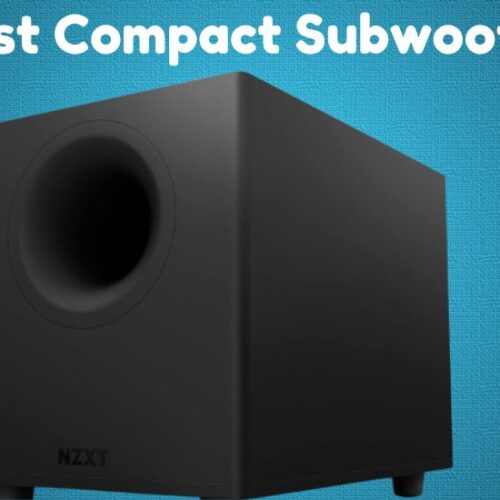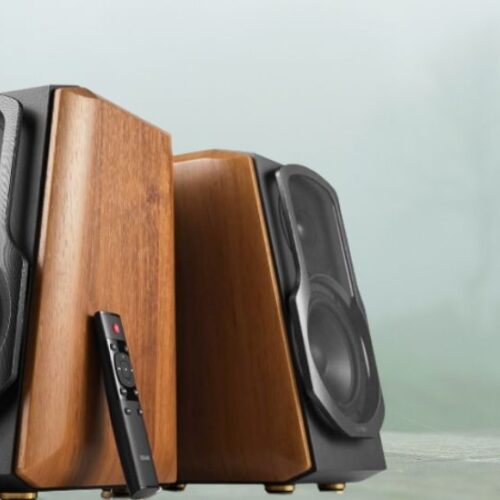Welcome to the audio world, where every beat, note, and whisper matters. At the heart of this sonic journey lies a fundamental concept: frequency response for speakers. Imagine it as the fingerprint of sound, dictating how faithfully a speaker can reproduce the entire spectrum of frequencies, from the deepest bass to the crispest treble.
But why does frequency response matter? Picture yourself at a concert. You want to hear every chord, every harmony, and every subtle nuance as if the artist is performing right before you. That’s where frequency response comes into play. It’s the magic ingredient that transforms electrical signals into vibrant sound waves, ensuring you don’t miss a single beat of your favorite song or word of your most cherished podcast.
Now, what makes a good frequency response? It’s not just about hitting the highest highs or the lowest lows. However, It’s about achieving a delicate balance across the entire audible spectrum, where no frequency is unfairly amplified or unjustly muted. So, it’s about fidelity, accuracy, and the pursuit of sonic perfection.
So, buckle up as we embark on a journey into the realm of speaker frequency response. From the science behind it to the art of choosing the right speakers, we’ll unravel the mysteries and unveil the secrets that lie within the frequency response curve. Thus, get ready to immerse yourself in the captivating world of sound, where every frequency matters and every detail counts.
Understanding Frequency Response
Let’s explore the essence of frequency response and its pivotal importance in audio.
What is Frequency Response?
At its core, frequency response is the backbone of audio reproduction. It defines a speaker’s ability to faithfully reproduce sounds across the audible spectrum. Imagine your favourite song as a colourful painting, with each frequency representing a different hue. A speaker with a stellar frequency response ensures that every shade is vividly depicted, from the deepest bass notes to the highest trebles, painting an accurate sonic portrait of the original recording.
What is the role of Acoustics in subwoofer?
Now, let’s talk about the elephant in the room: acoustics. Picture yourself in a concert hall, surrounded by soaring melodies and reverberating harmonies. The room’s acoustics are crucial in shaping your auditory experience, just as they influence speaker performance. From the size and shape of the room to the materials used in its construction, every aspect of room acoustics can either enhance or detract from the fidelity of sound reproduction.
how does human Hearing frequency respond?
Ah, the marvel of human hearing. Our ears are finely tuned instruments, capable of discerning the subtlest nuances in sound quality. But how does frequency response tie into this auditory symphony? Well, think of it as the conductor orchestrating the performance. A speaker’s frequency response directly impacts how we perceive sound quality, ensuring that each note resonates with clarity and precision, delighting our discerning ears with a symphony of sonic excellence.
What is a good frequency response curve?
Now, let’s take a peek behind the curtain and explore the intricacies of the frequency response curve. Imagine it as a musical score, with frequencies plotted along the X-axis and the speaker’s response measured along the Y-axis. This curve visually represents a speaker’s performance across the frequency spectrum. From the bass region’s gentle slopes to the treble’s sharp peaks, the frequency response curve provides invaluable insights into how a speaker handles different frequencies, guiding us in our quest for audio perfection.
Understanding frequency response is essential, whether you’re marveling at the richness of a symphony or grooving to the rhythm of your favorite beats. However, it’s also the cornerstone of audio fidelity, ensuring that every sound is faithfully reproduced, every note is crystal clear, and every listener is captivated by the magic of sound.
Best Practices for Choosing Speakers
Now that we’ve peeled back the layers of frequency response, let’s delve into some practical tips for choosing the perfect speakers to elevate your audio experience.
What is the most important speaker specification?
One metric stands out like a beacon of clarity when navigating through the sea of speaker specifications: the frequency response range. This humble number provides invaluable insight into the speaker’s ability to reproduce sounds across the entire audible spectrum. Whether you’re a bass aficionado craving those deep, resonant tones or a treble enthusiast yearning for crystal-clear highs, examining the frequency response range ensures your speakers can handle every note with finesse.
High-Frequency and Low-Frequency Response
Ah, the extremes of the frequency spectrum—the realm of the highest and lowest highs. When evaluating speaker performance, pay close attention to high-frequency and low-frequency responses. A speaker with a robust high-frequency response ensures that delicate nuances and sparkling harmonics are rendered precisely. In contrast, a strong low-frequency response delivers earth-shaking bass you can feel in your bones. Furthermore, scrutinizing these extremes ensures that your speakers can paint a vivid sonic tapestry that resonates with your soul.
Optimizing Sound Quality
At the end of the day, it’s all about sound quality—the holy grail of audio enthusiasts everywhere. But achieving sonic nirvana requires more than a cursory glance at speaker specifications. It’s about selecting speakers with the best frequency response for your listening environment and preferences. Are you setting up a cozy listening nook in your living room or outfitting a sprawling home theater system? By tailoring your speaker selection to your unique needs and tastes, you ensure that every note, every chord, and every whisper is delivered with unparalleled clarity and fidelity.
So, remember these best practices, whether you’re embarking on a quest for the perfect speakers to serenade you with sweet melodies or shake the foundations with thunderous bass. By considering the nuances of frequency response and optimizing sound quality to suit your preferences, you pave the way for an audio experience that transcends the ordinary and transports you to a realm of sonic bliss.
Why Frequency Response Matters?
Now that we’ve explored the intricacies of frequency response, let’s unpack why it is so profoundly significant in the world of audio.
How does frequency response contribute to sound quality?
At the heart of it all lies one simple truth: sound quality reigns supreme. Imagine your favorite song, meticulously crafted by talented musicians and engineers, each note lovingly polished to perfection. Now, picture that same song emanating from a speaker with a lackluster frequency response—muddy bass, shrill highs, and a general sense of sonic distortion. Not exactly the auditory masterpiece you were hoping for, right? But fear not, for a speaker with an ideal frequency response is like a faithful messenger, faithfully reproducing every subtle nuance and delicate harmony, ensuring your music sounds as good as the original recording.
What’s the role of Accuracy in Reproduction?
In the pursuit of sonic perfection, accuracy in reproduction is paramount. Think of it as the difference between watching a movie in standard definition versus glorious 4K resolution. Achieving a flat frequency response is akin to unlocking the full potential of your audio content, allowing you to hear every whisper, every sigh, and every flourish with breathtaking clarity and precision. Besides, whether you’re a discerning audiophile or simply someone who appreciates good sound, a flat frequency response ensures you don’t miss a detail in your favorite tunes.
How does frequency response impact the overall listening experience?
But frequency response isn’t just about hitting the right notes—it’s about crafting an unforgettable listening experience. From the deep, resonant bass lines that pulse through your body to the ethereal highs that tickle your senses, every aspect of your auditory journey is shaped by frequency response. Hence, It’s the difference between merely hearing music and truly experiencing it, between a mundane commute and a transcendent sonic adventure. By prioritizing frequency response when choosing speakers, you unlock a world of sonic possibilities, where every note, every chord, and every beat comes alive with unparalleled clarity and fidelity.
So, the next time you search for the perfect speakers, remember the importance of frequency response. Yet, it’s not just another spec on a product sheet—it’s the key to unlocking a world of sonic bliss, where every listening experience is a symphony of perfection.
Key Takeaways
As we wrap up our exploration of frequency response and its impact on speaker performance, let’s recap the key points and distill them into actionable insights.
- Understanding Frequency Response: Frequency response is the backbone of audio reproduction, dictating a speaker’s ability to faithfully reproduce sounds across the entire audible spectrum.
- Importance of Understanding: When selecting speakers, it’s crucial to grasp the intricacies of frequency response to ensure you choose the right speakers for your needs and preferences.
- Optimizing Sound Quality: Prioritizing speakers with the best frequency response for your specific listening environment can optimize sound quality and enhance your overall auditory experience.
Conclusion
As we conclude our journey through the realm of frequency response and speaker performance, let’s reflect on the profound significance of this fundamental concept.
- Significance of Frequency Response: Frequency response serves as the cornerstone of speaker performance, shaping the fidelity, clarity, and richness of audio reproduction. It’s not merely a technical specification but the essence of sonic excellence.
- Priority of Frequency Response: In the quest for audio perfection, prioritizing frequency response is paramount. By understanding the nuances of frequency response and selecting speakers with optimal performance in this regard, you pave the way for a truly immersive and captivating listening experience.
- Impact on Sound Quality: Remember, frequency response influences every note, chord, and whisper. Therefore, by prioritizing this critical aspect of speaker performance, you unlock a world of sonic possibilities where every detail is rendered with breathtaking clarity and fidelity.
So, as you embark on your journey to find the perfect speakers, let frequency response be your guiding light. By prioritizing this fundamental aspect of speaker performance, you ensure that every listening experience is a symphony of perfection, where every note resonates with depth, clarity, and unparalleled beauty.
FAQs
Q1. Is a higher or lower frequency response better?
When evaluating speaker performance, the question arises: Is a higher or lower frequency response better? The answer lies in striking a balance. A higher frequency response ensures clarity in treble, while a lower response enriches bass. The ideal choice depends on personal preference and the desired sound profile.
Q2. What is the standard speaker frequency response?
The ideal range typically spans from 20 Hz to 20 kHz, encompassing the full spectrum of human hearing. However, specific preferences and listening environments may necessitate variations, emphasizing the importance of selecting speakers tailored to individual needs for optimal audio performance.
Q3. What defines the frequency response of audio quality?
It encompasses a speaker’s ability to accurately reproduce sounds across the audible spectrum. A flat frequency response, where all frequencies are reproduced equally, often signifies high-quality audio reproduction. Understanding and optimizing frequency response is key to achieving optimal sound fidelity and clarity.
Q4. What characterizes the frequency of bass boost?
Typically, bass boost targets lower frequencies between 20 Hz and 250 Hz. This augmentation enhances the low-end response, providing a richer, more pronounced bass experience. Understanding the frequency range of bass boost aids in tailoring audio settings to personal preferences.









